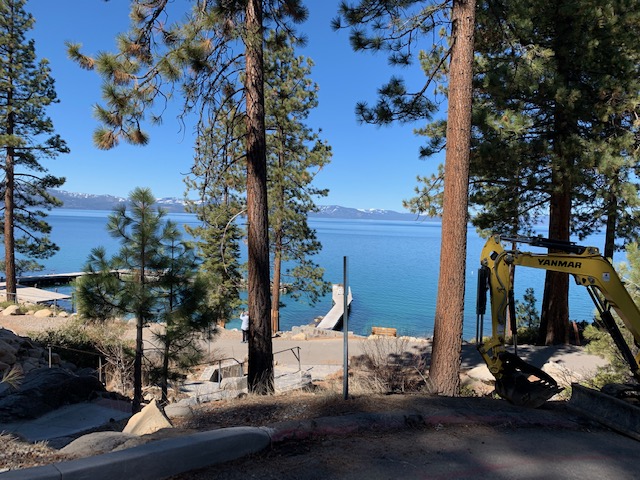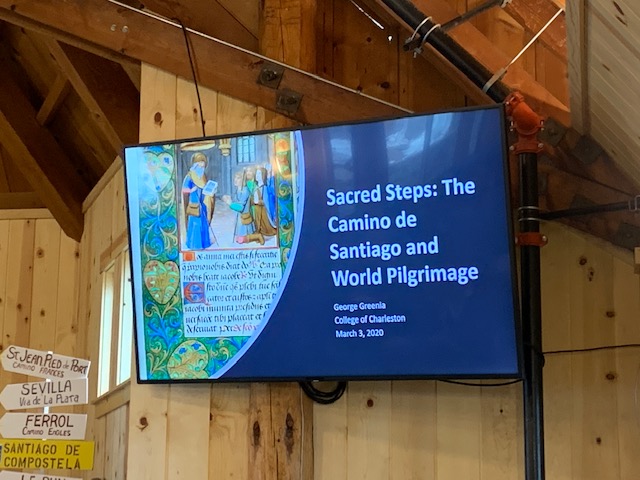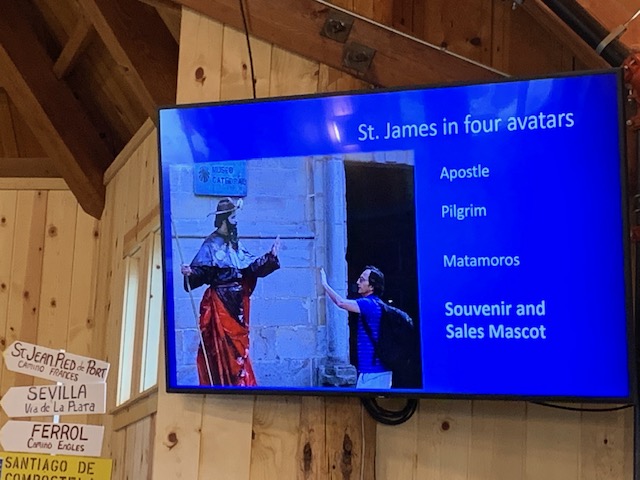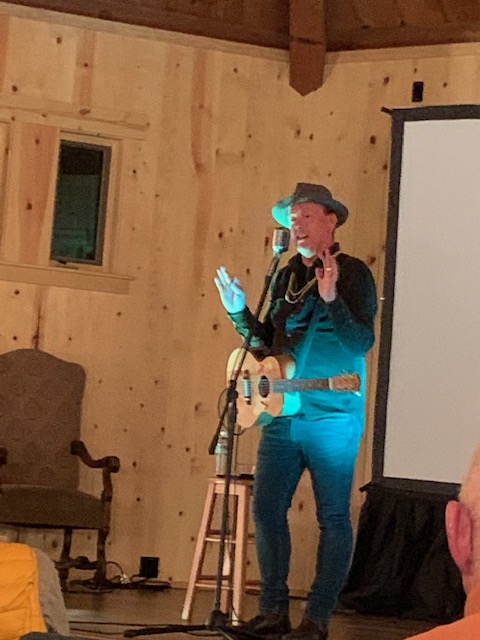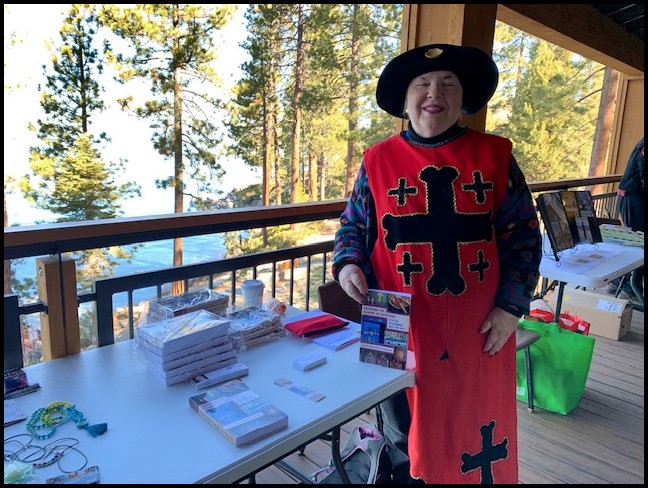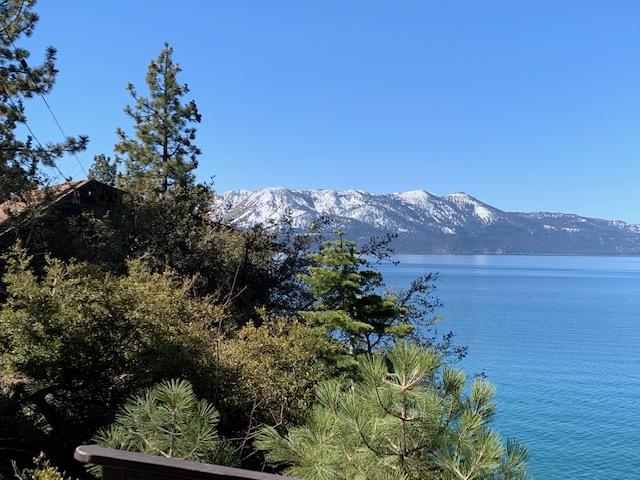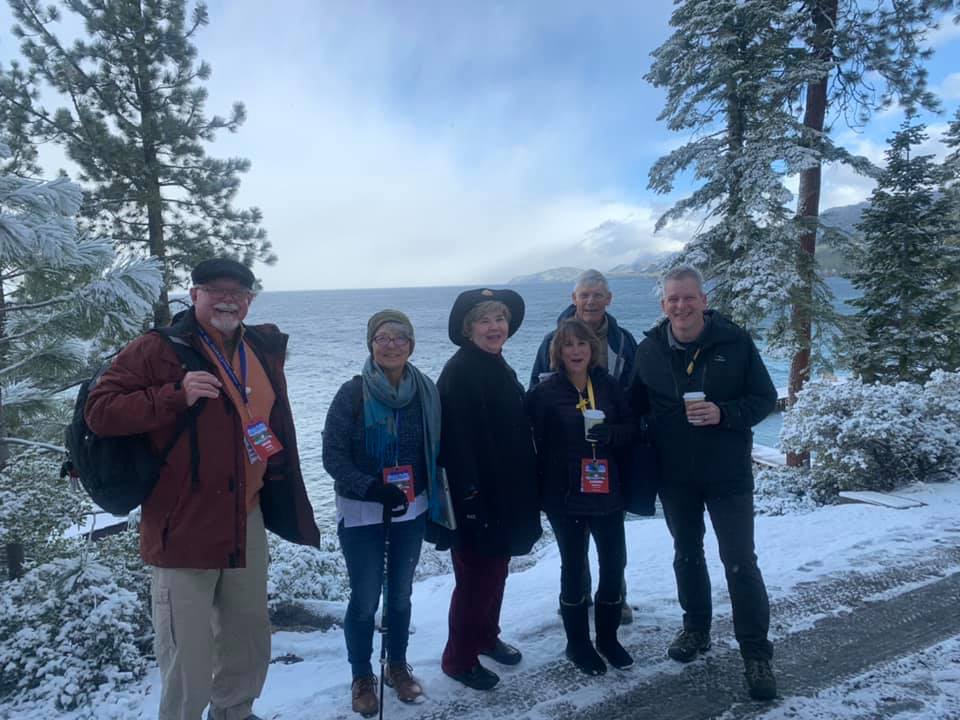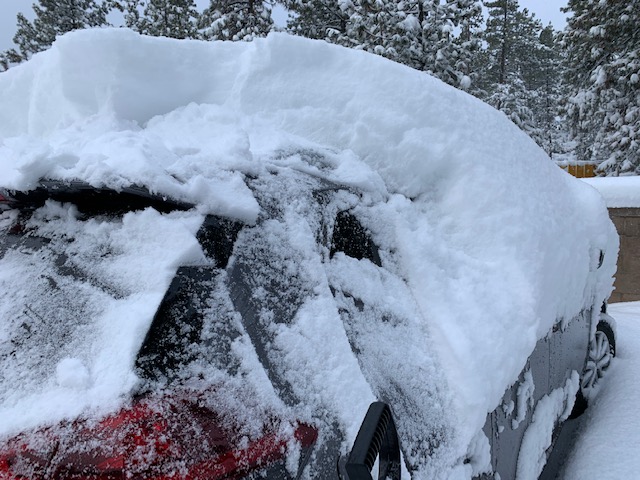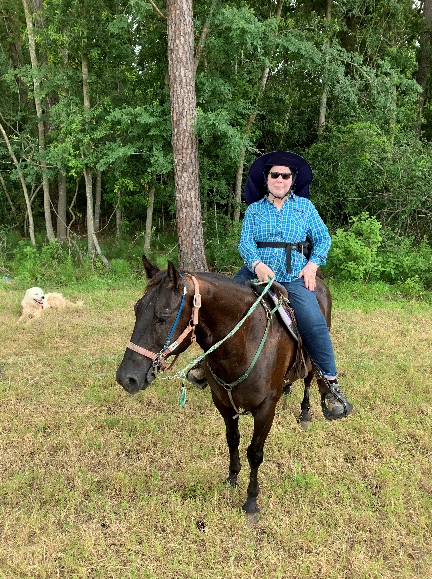
Growing up way out in the country, on a plantation being run as a cattle ranch, I lived an isolated life. The other nearby children were all boys. As an introvert, my “tribe,” my go-to support group, consisted of books, my dog, and horses. Being able to saddle up a horse and go for a long ride anytime I wanted to do so was wonderful. Flying down the main plantation road at a full gallop, my heart pumping and adrenaline surging, gave me a thrill in a way nothing else did. As a rider, I was fairly fearless, and more of a horse person than any of my brothers, who seemed to prefer things with motors, like trucks and tractors. I saw the Sunday night Disney two-part series “The Horse Masters” when I was ten. I wanted to go to that riding school. I wanted to learn to ride English-style. I wanted to enter jumping contests. I asked Santa for an English-style saddle for Christmas, and Santa found that I had been a good girl that year and obliged. I still have that saddle; it has accompanied me around the world. The joy of riding was baked into my bones, and the love of horses has only grown stronger over the years. When I found out that it was possible to ride the Camino de Santiago, I couldn’t get the idea of riding it out of my head.
My previous recent posts have set out my plans to repeat a Camino de Santiago pilgrimage, but this time on horseback, and to train over the summer of 2021 in order to get ready for that horseback Camino. While I’d done almost no riding since my mid-30s, and certainly no very long rides, I was confident in my ability to ride. I understood horses. I loved them, but I also respected them. In the flight-or-fight division of animals, horses are in the flight category. If something scares them or startles them, their first instinct is to flee, which can mean going from zero to a full-out gallop in a couple of leaps.
My biggest worry in starting this Camino riding adventure was a concern that I would be thrown. As a child, teenager, and adult, I had been thrown many times. It’s a part of riding, a negative aspect that I accepted. I had never been hurt by being thrown. My eldest brother, on the other hand, was thrown off a horse as a teenager and had the misfortunate to land on and then slide down a barbed wire fence. The scars on his back are still with him. Most of us are familiar with the case of Christopher Reeves, thrown while competing in a cross-country event and left a quadriplegic. Even worse, when I was a child, a young man working for my father got thrown in one of our back pastures and suffered a severe head injury. He died. For a cattle ranch, horses are a necessity to work the livestock, and just as riding in a car carries risk, so too does riding.
The thing about being thrown is that the rider is not necessarily at fault or insufficiently trained. If a rider enters a rodeo, or a jumping contest, or chooses a highly spirited horse, of course that rider knows that the chances of being thrown increase exponentially. However, even a sedate trail ride can result in riders being ejected from the saddle. For example, plodding along nose-to-tail with the horse in front, a trail horse might suddenly catch sight, out of the corner of his eye, of something unexpected, and off that horse sprints, sometimes leaving his rider in the dust.
The horses at Cypress Trails Ranch, where I rode over the summer of 2021, were very well trained. Even so, during those months I saw more than one incident when a rider or riders were unhorsed. In the worst incident, I had mounted my preferred horse, Toby, and was waiting in the stable yard for the one-hour 11:00 am trail ride to move out. Suddenly a yell went up, “Hold the horses!” Every available wrangler, intern, and staffer rushed out and grabbed the reins of every horse that had a rider. Then we waited. And waited. An intern, maybe 14 years old, was holding Toby’s reins. I didn’t think I needed to have Toby’s reins held, but I wasn’t exactly sure what was going on, so I didn’t say anything. Finally, the penny dropped, and I realized someone must have been thrown and the riderless horse was in flight towards the stable yard.
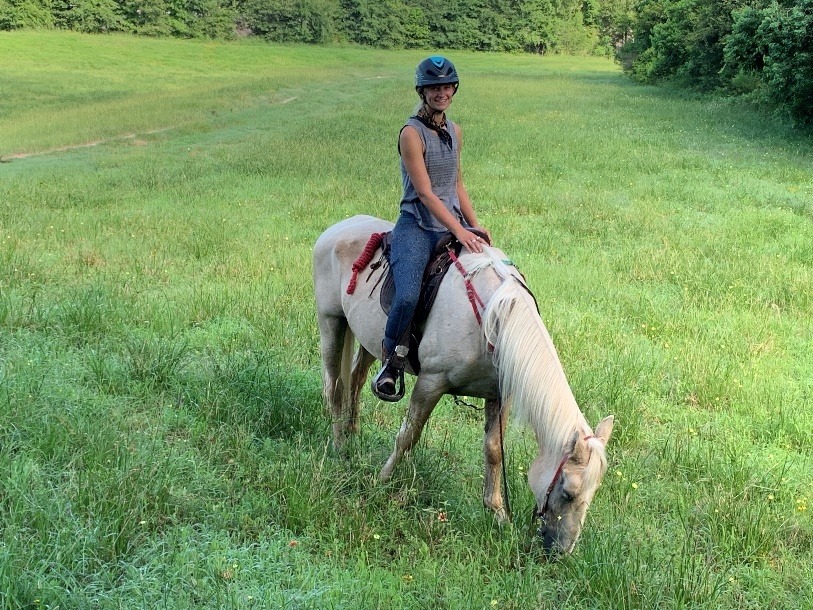
A horse in full flight will spook other nearby horses, whose instinct is to follow the lead of a herd member and flee the danger, whatever it might be. All of us in the stable yard continued waiting. And then waited some more. Looking down, I realized that the intern was standing directly in front of Toby, instead of at his shoulder. Were Toby to bolt, he would run right over the top of the girl. I was telling her to move to the side when the first riderless horse, reins and stirrups wildly flapping, thundered into the stable yard, clearly panicked. The horse next to Toby bunched his muscles preparing to gallop away. An experience wrangler was holding that horse; the wrangler kept the horse from taking off, but an initial leap and subsequent sideways movement made that horse bash into Toby, who just to keep his balance stepped forward. Toby didn’t bolt, and the intern didn’t get run over by a 1,200-pound horse, but it was a close thing for a second or two.
The first horse in flight was followed by a second panicked horse. And a third. Then a fourth and a fifth horse. What in the world had happened? That’s a lot of thrown riders on what was supposed to be a leisurely trail ride. As soon as the five spooked horses were caught by wranglers and led off to calm down, my trail ride headed out. None of the thrown riders had yet walked into the stable yard. We were well into the trail ride when I spotted an all-terrain vehicle loaded with a driver and five passengers. Everyone looked fine.
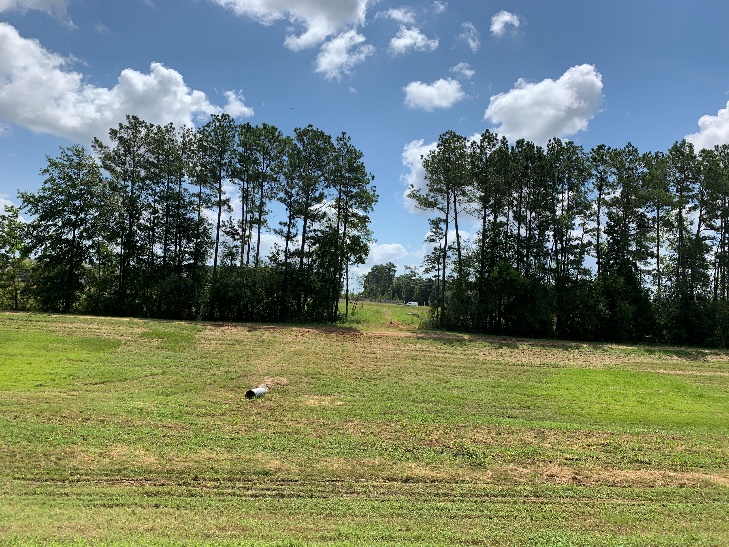
It was a while before I heard the story. One horse on one trail ride had spooked and bolted, taking along a second horse, with both riders falling off. It so happened that there was a second group of trail riders across a large open area. The two spooked horses headed for the safety of their mates in the other trail ride, crashing into the line of trail riders, causing three more horses to bolt and three more riders to get thrown.
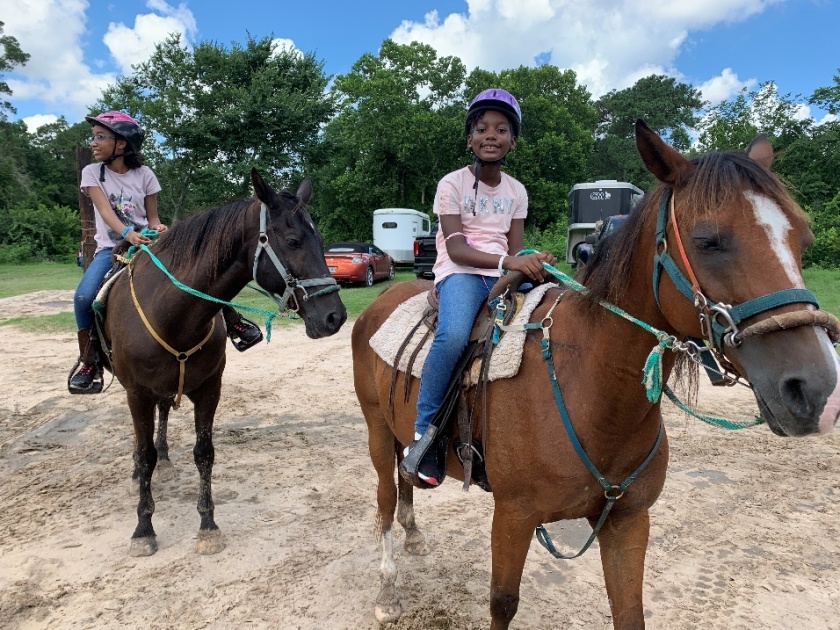
While that was the most dramatic incident I saw at Cypress Trails, it was hardly the only incident. On two other trail rides, I saw riders unseated. The first time, a deer crashed out of the woods and ran right into a horse named Wizard, causing the horse to lunge out of the way, which in turn left his rider, in a Wile E. Coyote moment, hanging in the air before hitting the ground. To the rider’s credit, she picked herself up and immediately remounted. No screams, no tears, no demands to return to the stable yard. I was so impressed with this novice rider that I posted a photo of her on my Instagram page. The second time I saw a rider unseated, the reason for the horse to suddenly jump forward was not at all clear. That rider also picked himself up and got right back on his horse.
I know I’m a good rider, with excellent balance and strong knees for gripping. I know I am very good at “reading” a horse: ear position, the bunching of muscles prior to a run, head location. A horse with his head thrown up and his ears pinned back is getting ready to fight with another horse, for example. A rider can see this, and prepare for it. Other times, however, sudden bolts give the rider no advance warning.
All of these incidents kept fresh in the forefront of my mind the danger of being thrown. As a younger woman, I wouldn’t have worried about it so much, but now, old, overweight, and out of shape, I was very worried. If anything could derail my horseback Camino, it would probably be an injury from being thrown.
Or at least that was my thinking before July. In accordance with my master plan, my intention was to increase the number of hours that I would ride each month: from two per riding day in May to three in June to four in July. For June that would be a one-hour, one-on-one ride with a wrangler plus a two-hour trail ride every day I was at Cypress Trails. By the end of May, however, after 20 hours in the saddle, I was still experiencing intense pain when I rode.
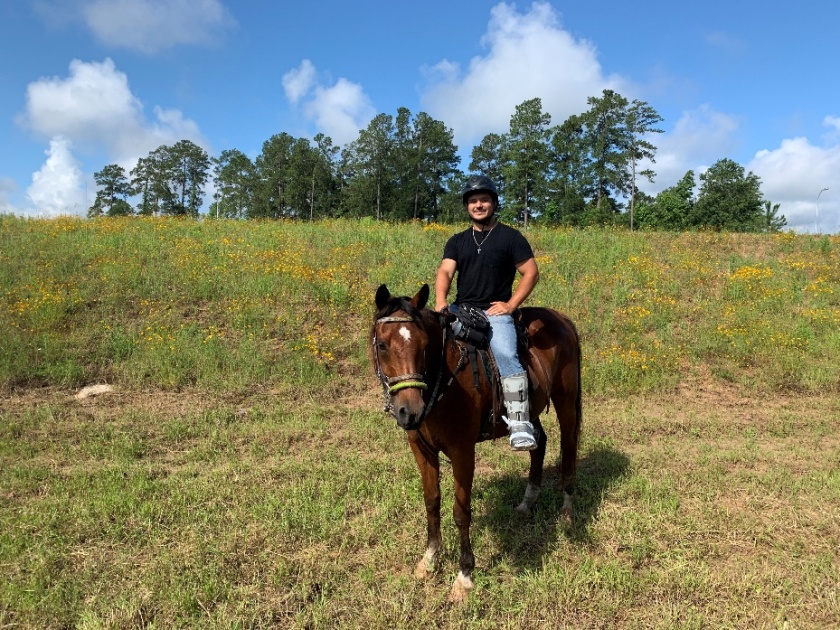
The pattern of the pain was always the same. For the first half-hour of the first ride, I felt wonderful. It was fabulous to be back on a horse, out in nature, with summer beauty all around me. At about thirty minutes into the first ride, the pain started. Hips, thighs, knees, shins, ankles, feet—all of them hurt, with the pain intensifying over time. By the end of the second thirty minutes, I was in such pain that all I wanted to do was dismount and walk back to the stable yard, but dismounting was a problem and besides I had to work through this pain in order to build up my stamina for the Camino horseback pilgrimage. When the wrangler signaled that it was time to head back, I was always more than ready. I then took an hour-long break before my second hour-long ride. The strange thing to me was that after dismounting and resting a bit, the pain stopped. Something about riding was causing the problem, and I thought at first that it was just that my muscles needed to stretch out for riding.
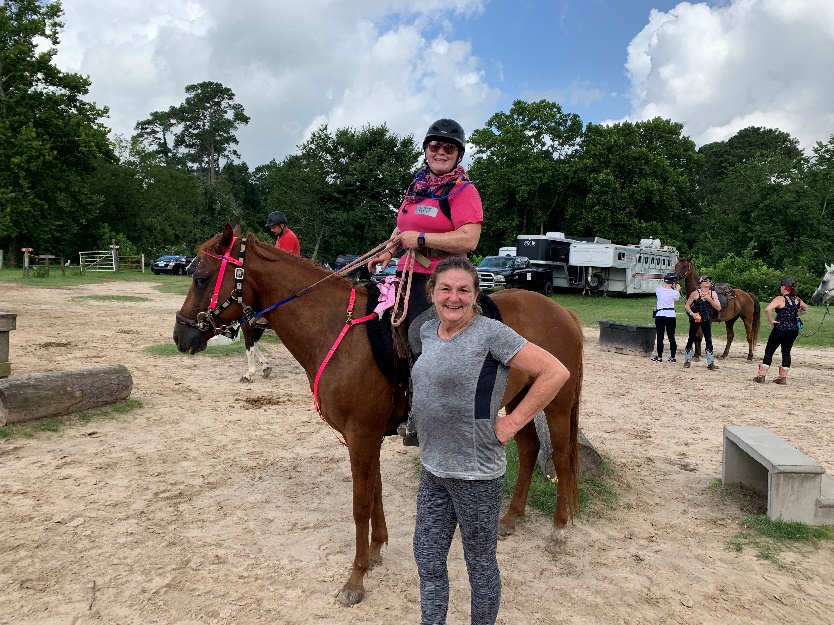
In mid-May, I had booked my June rides, increasing the trail rides from a one-hour to a two-hour ride. Towards the end of the month, I talked over my situation with Tracy Sugg, who was working the Cypress Trails check-in desk. She suggested I change to an hour-and-a-half trail ride rather than a two-hour ride as a way to ease into the longer time in the saddle. That sounded like a great suggestion to me, so she rebooked my June trail rides for the shorter time.
On my first June hour-and-a-half ride, I knew I was in trouble. My pain continued to follow the same pattern, and by the time the first 60 minutes had passed I was in great pain, yet I had another 30 minutes to go. When I got back to the stable yard, I knew I wasn’t yet ready to increase my time in the saddle, but I was still hopeful that my muscles would stretch out during June.
That hope was gradually dashed as each June day of riding went by. By the end of the month, with 40 hours of riding completed, I was really worried. Nothing was improving. How would I ever be able to ride four to six hours per day for five days straight on the Camino? Almost every day that I rode, I considered dropping the whole idea of a horseback Camino. Nevertheless, as I mentioned in my previous post, I have a stubborn streak, so I refused to give up. Something was clearly wrong, and I suspected the problem started in my right hip. The pain seemed to radiate down from there. I called and made an appointment with my general practitioner.
June was a difficult month in terms of riding, but it brought its own pleasures too. Those first halcyon minutes of pain-free riding. Exercising (at last!). Getting to know the Cypress Trails staff and horses. Getting out of the house in the middle of the pandemic.
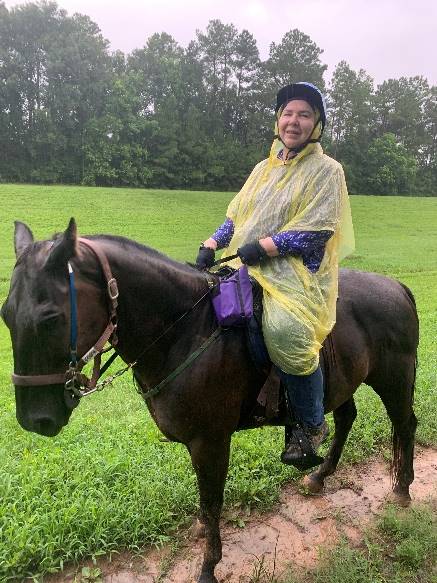
Both May and June in Houston were extremely wet months. Whether rainy or clear, booked rides head out on schedule. The only times rides get cancelled are when lightning is striking nearby, since a rider atop a horse, particularly on open ground, constitutes an excellent target for a lightning strike, and indeed one rider and horse were hit by lightning over the summer (but luckily they were more shocked than injured).
With all of the rain, the trails were muddy everywhere and had canon-high mud in some places. Mud is slippery, even for a horse with the stability of four legs, and slipping and sliding can be disconcerting for a rider, particularly on an up or down slope. As for the alternative—using gravel paths–the horses generally hate it, since their hooves are designed to walk on dirt; a sharp stone can hurt the sensitive part of their hoof as much as it would hurt a human foot. The best surface for riding in rainy weather, sand, was only available on some east-side trails, which got ruled out for a separate reason.
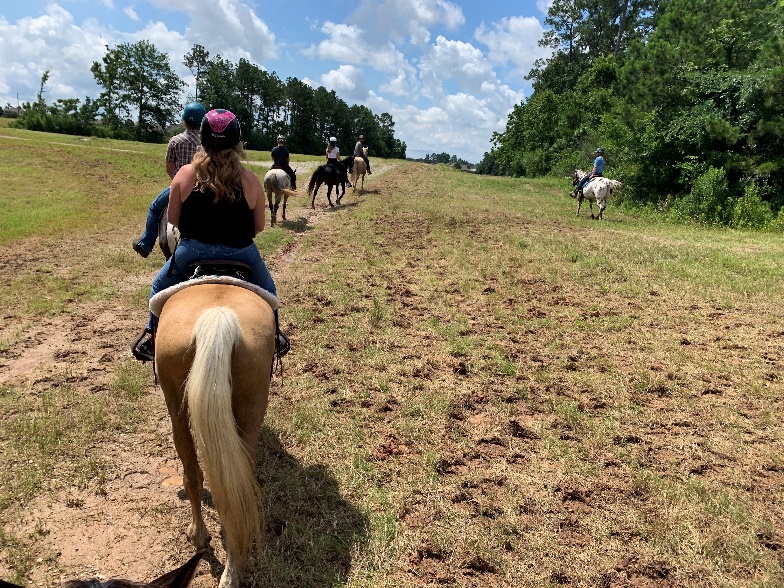
June in Houston is prime horse fly season. If you have never seen a horse fly, it is about twenty times the size of a regular fly. Huge, fat, and just waiting to land on your horse (or you) and suck blood, horse flies have been known to drive horses loco, making them buck or bolt in an effort to dislodge the horse flies. A horse’s tail is great for switching away horse flies, but a tail can’t reach everywhere on the horse’s body, such under his belly. Cypress Trails horses were sprayed with an anti-horse fly concoction during horse fly season, and knowledgeable riders doused themselves with Off or a similar repellant, but even so the horse flies managed to land and bite. I received several bites in June on places hard for me to reach or see, like my back or underarm. Painful in the instant, the bites I got caused subsequent swelling, redness, and itching for two weeks or more. Based on years of experience, Darolyn Butler, owner of Cypress Trails, banned rides from the heavily shaded trails east of the stable that were populated with hordes of horse flies. That meant from June through mid-July, all rides had to be on the west-side trails.
In the full daylight of the west-side trails, the number of horse flies decreased, but the sun, even at 9:00 am, could be brutal, and by 11:00 am it was not wise to go out without water. I had ordered a small caddy that I could strap to the saddle in order to carry a bottle of water, my phone, car keys, and sun glasses, replacing the fanny pack which I had found to be cumbersome.
Given the copious June rain and despite the hot sun, instead of dry, hard ground, the west-side trails were churned up and very muddy. This led to a strange situation on many days—intense heat from above coupled with slow-to-dry mud below. In the choice between horse flies or heat and mud, everyone agreed with the decision to stick to the west-side trails.
Taking into account all of these negative aspects—the fear of being thrown, the pain, the mud, the horse flies, the sun—why did I continue? The peace and beauty of the first 30 pain-free minutes on horseback made it all seem worthwhile. Leaning over to pat Toby’s neck, smelling his horse smell, looking at the yellow and blue wild flowers dotting the landscape, watching a butterfly flit among the flowers, trying to identify the birds soaring overhead—these were all magical moments that I didn’t want to give up. At least not yet. At least not until I absolutely had to do so. I still wanted to have one last, great, memorable riding experience. After all, it was bred in my bones and stuck in my head.


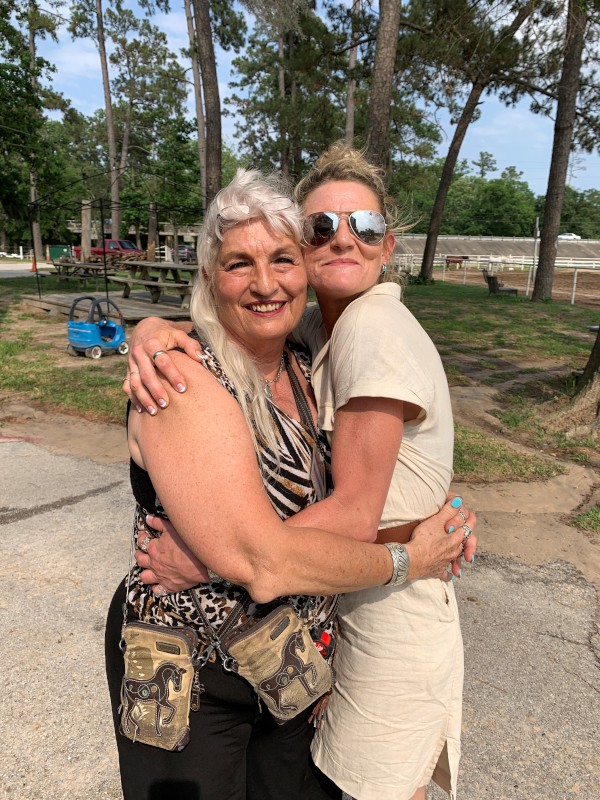
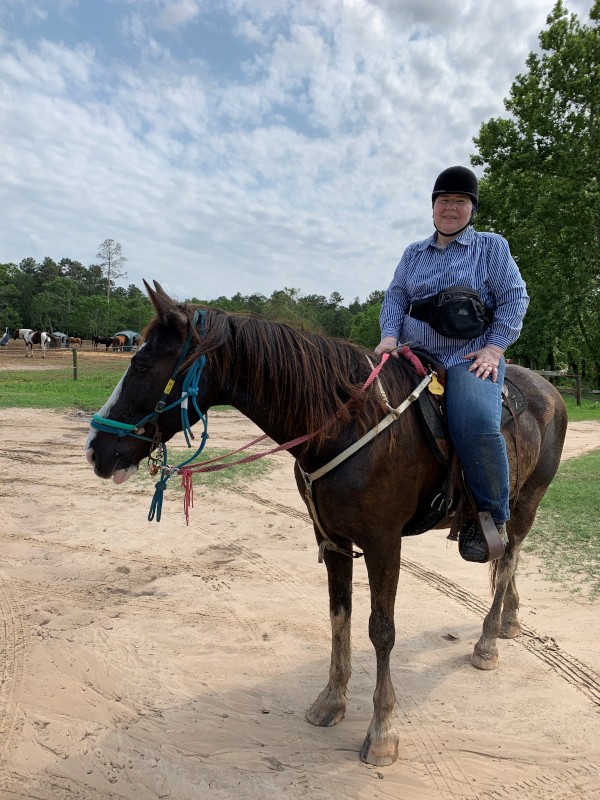
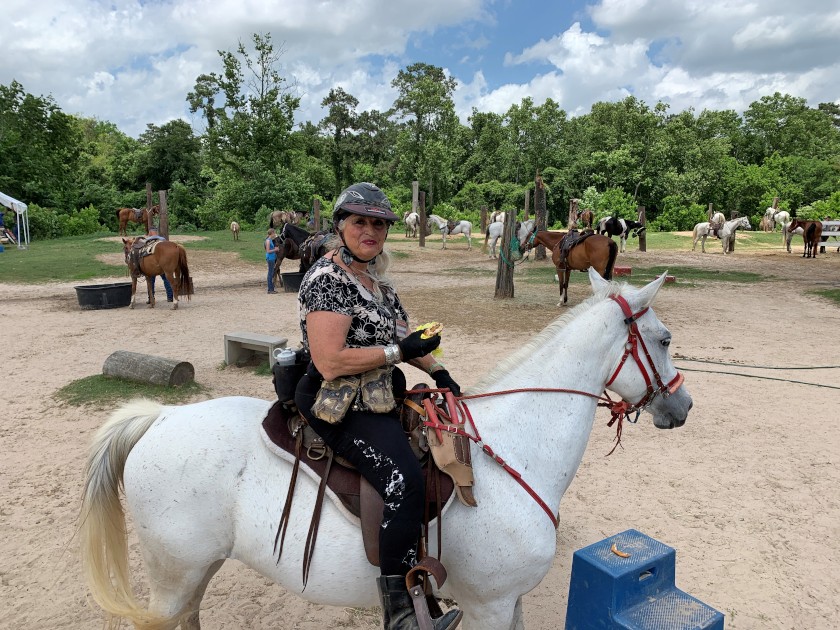
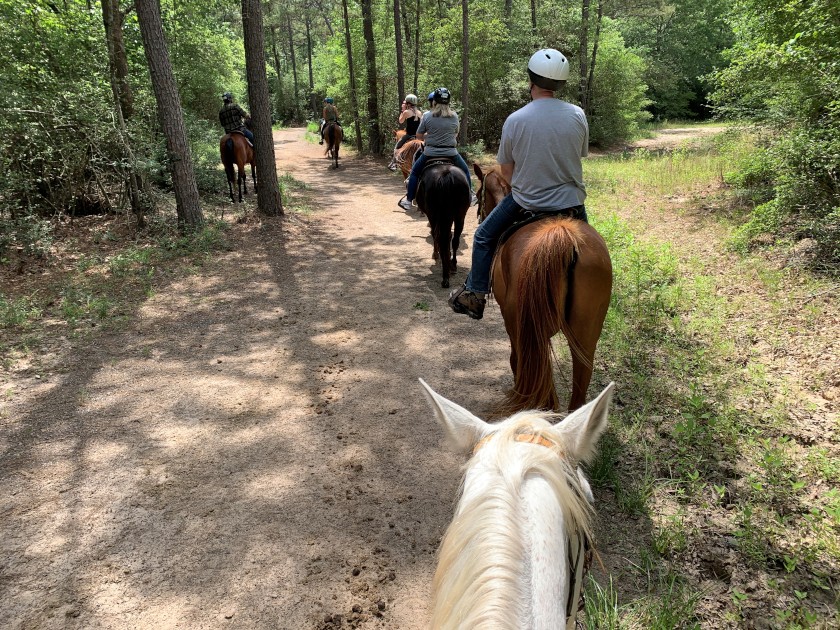
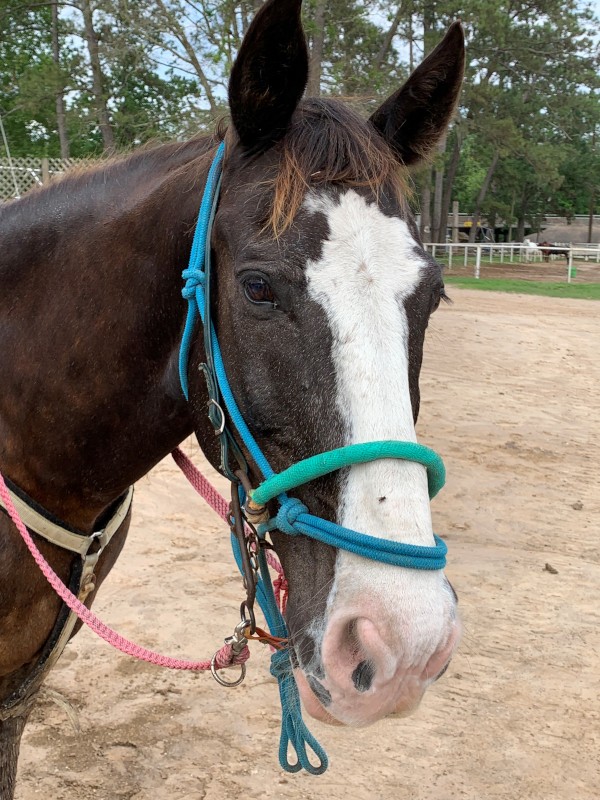
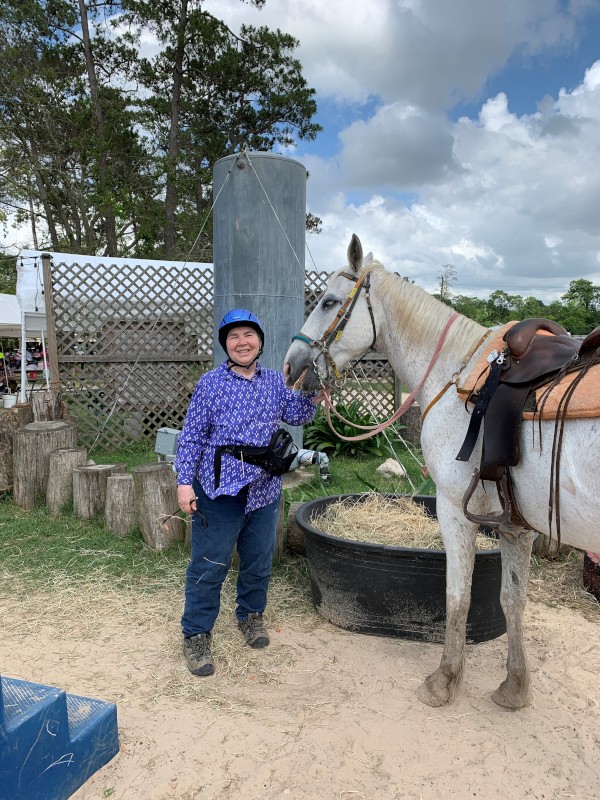
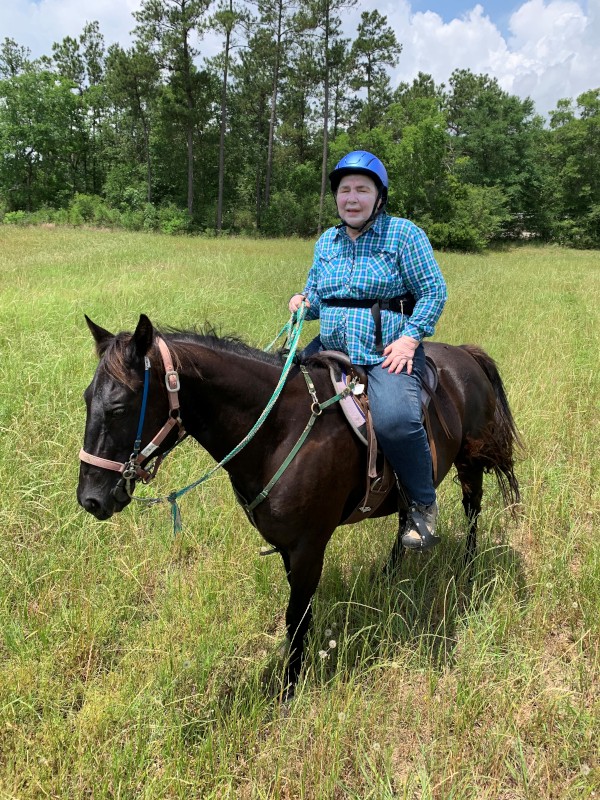
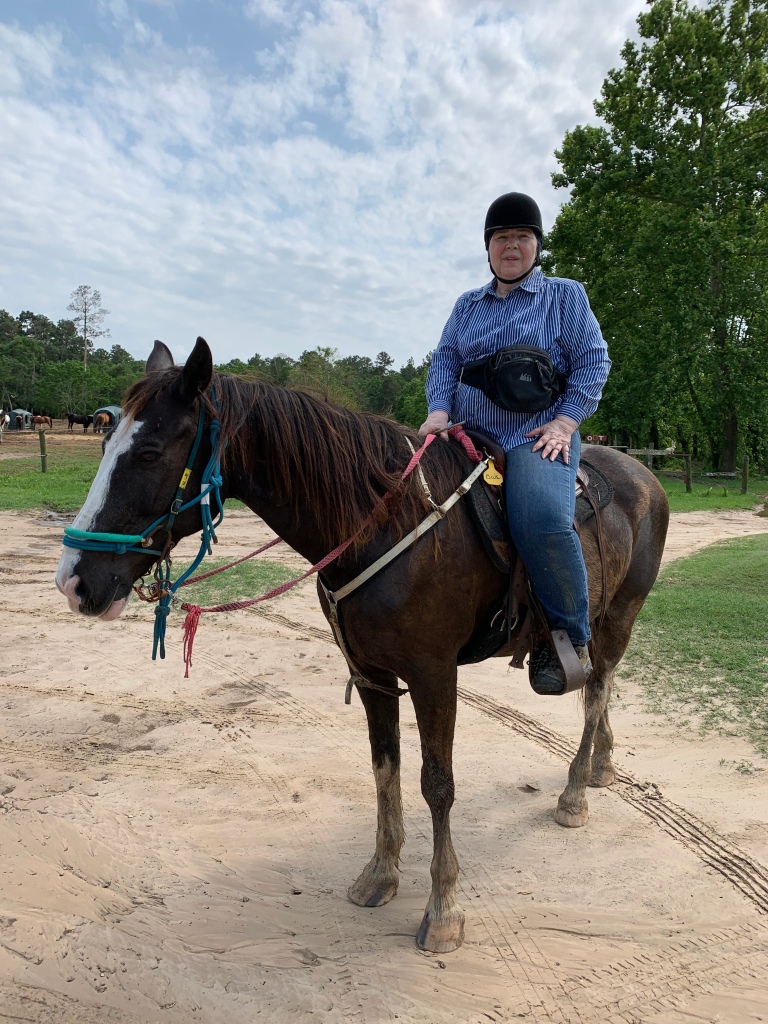
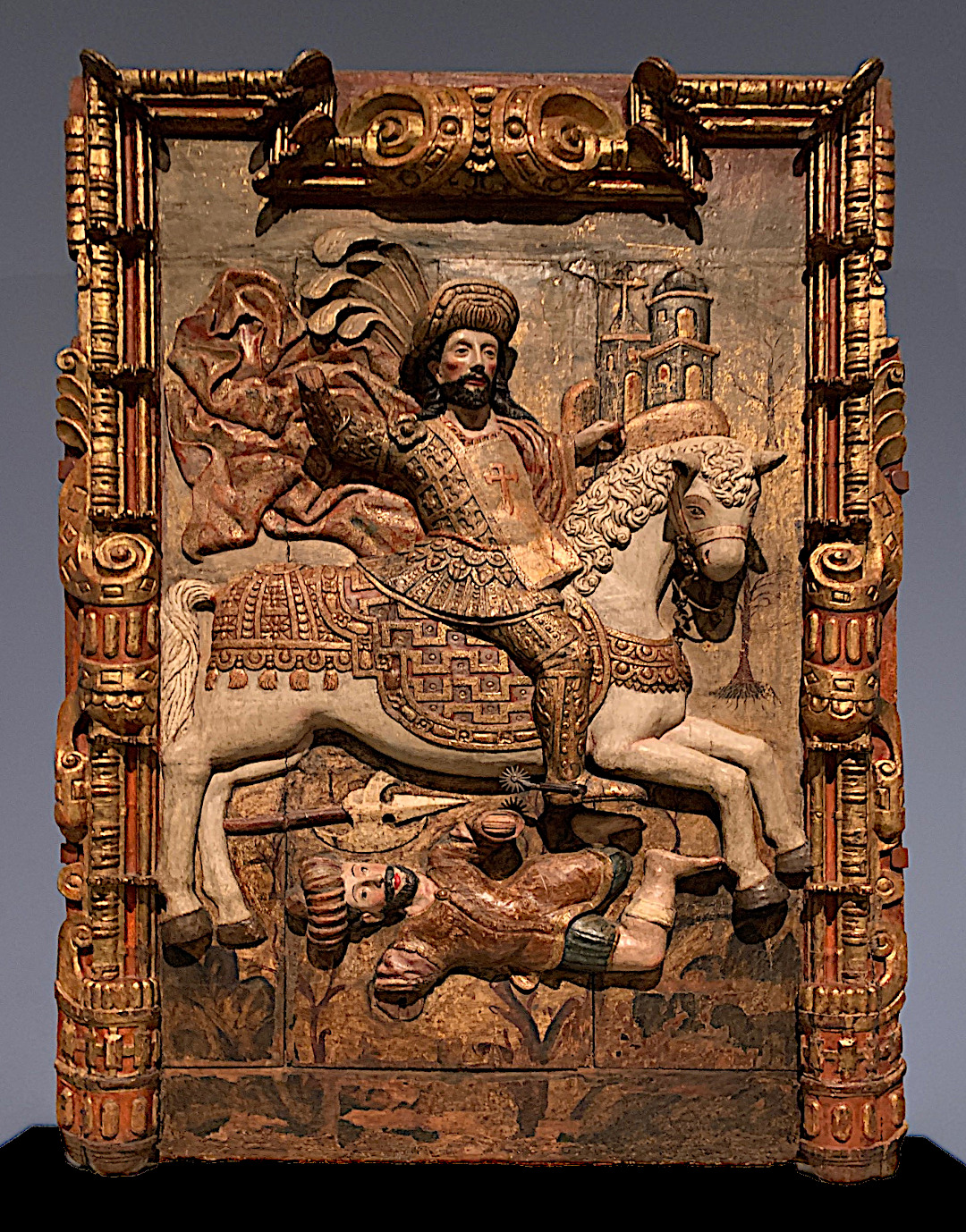

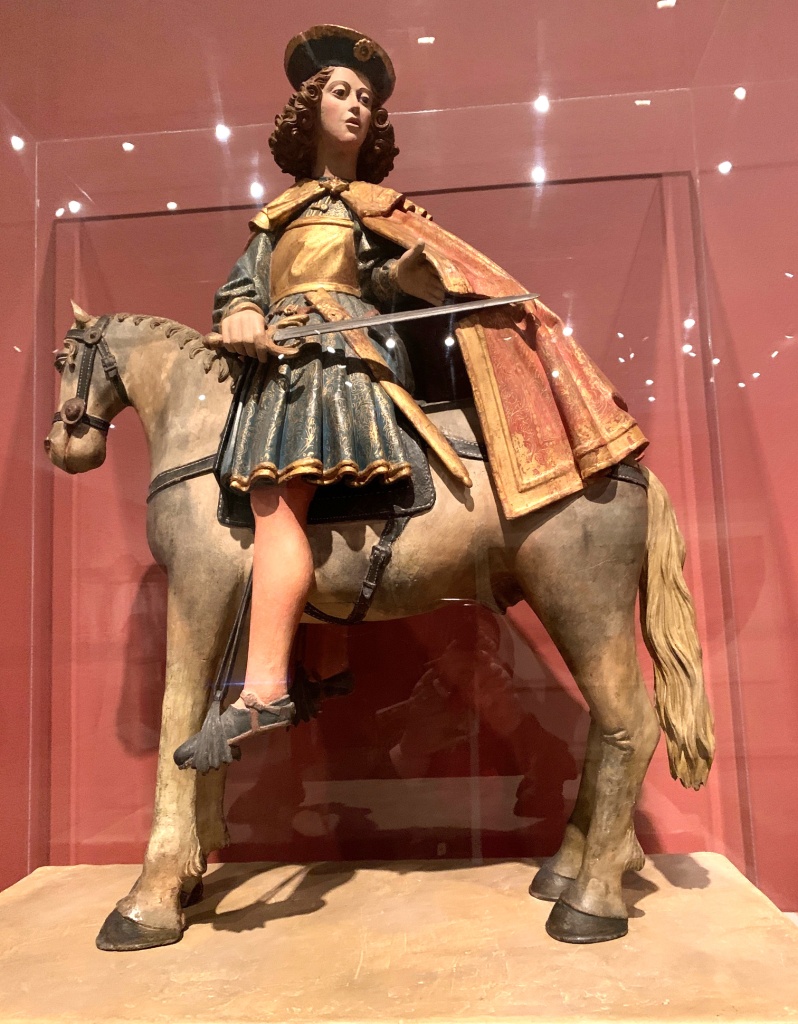
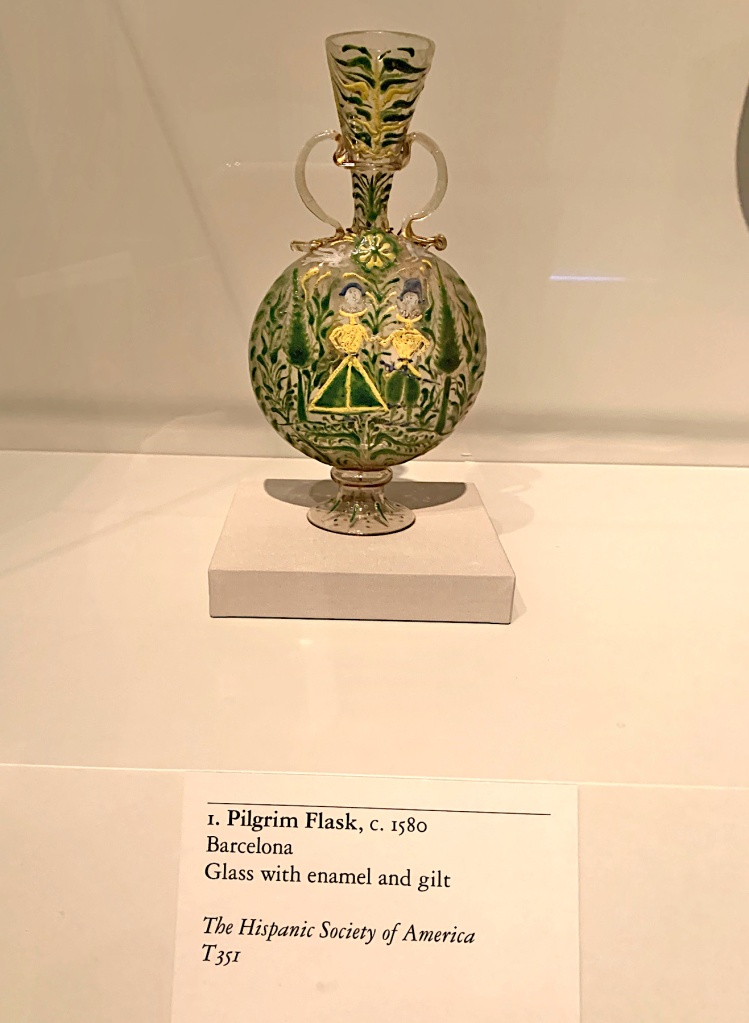

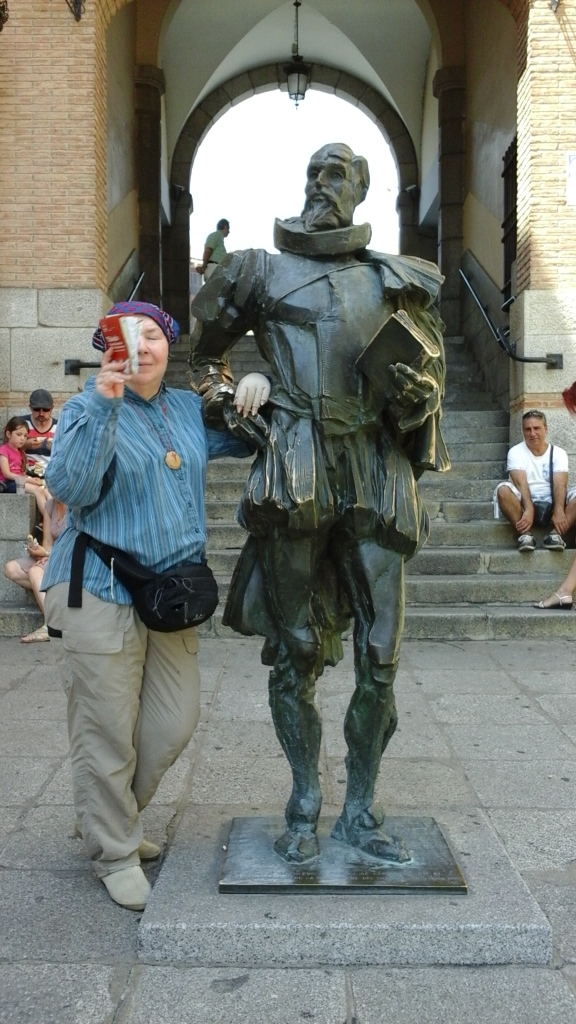
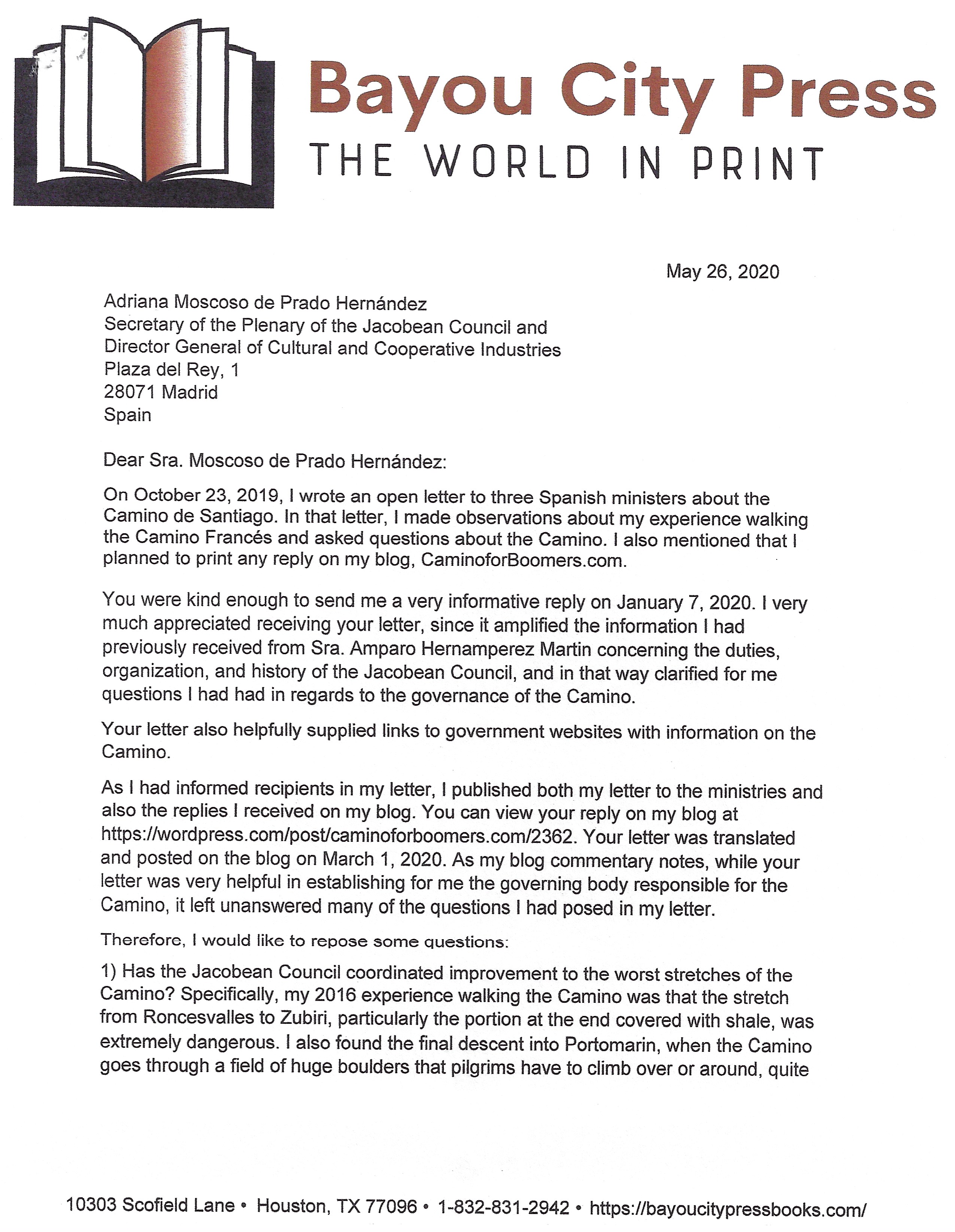
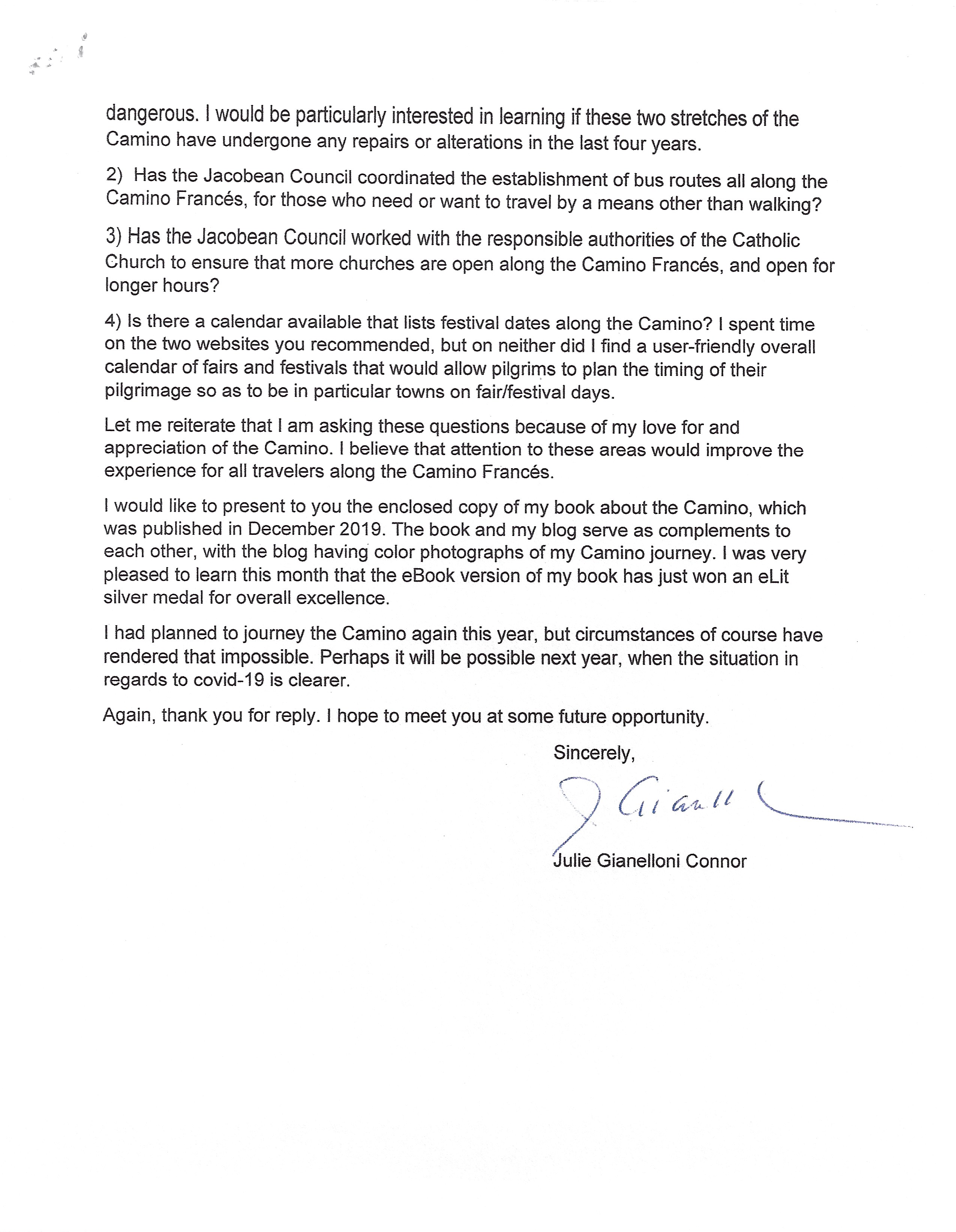
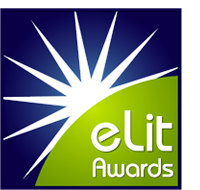

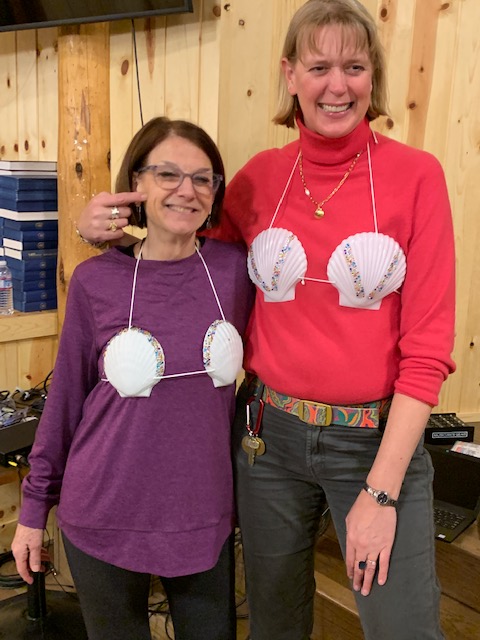
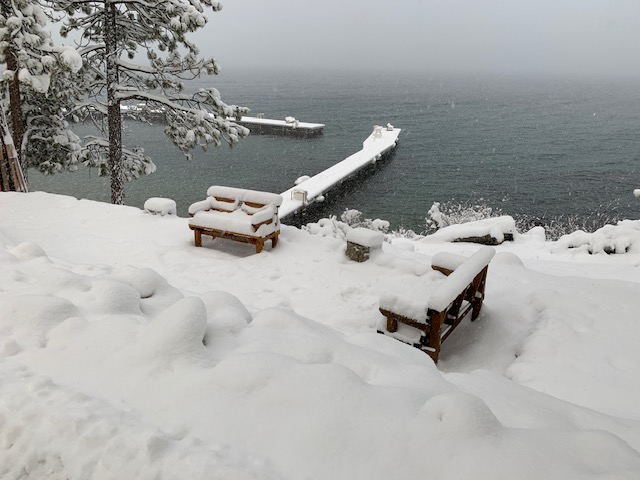


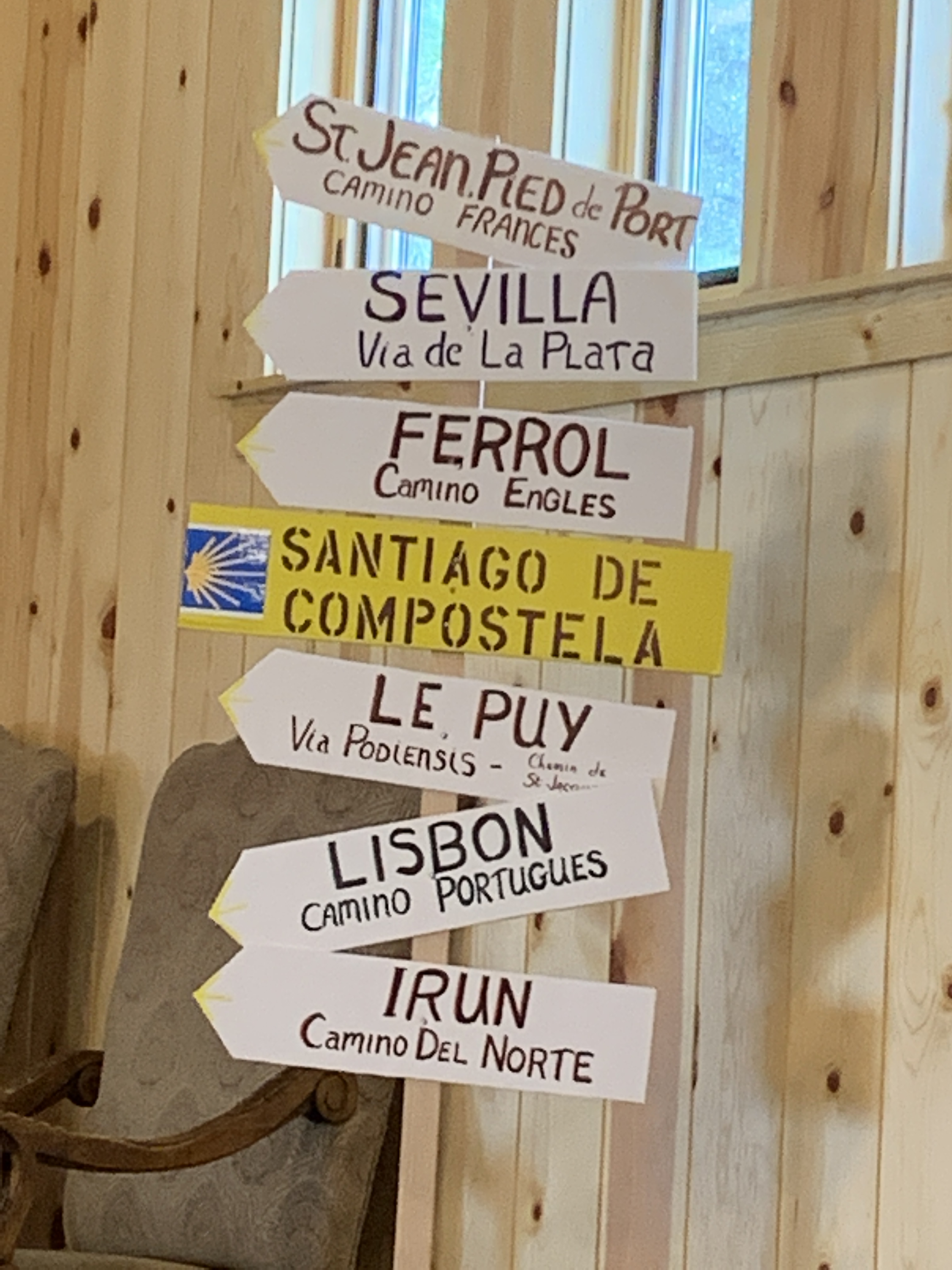
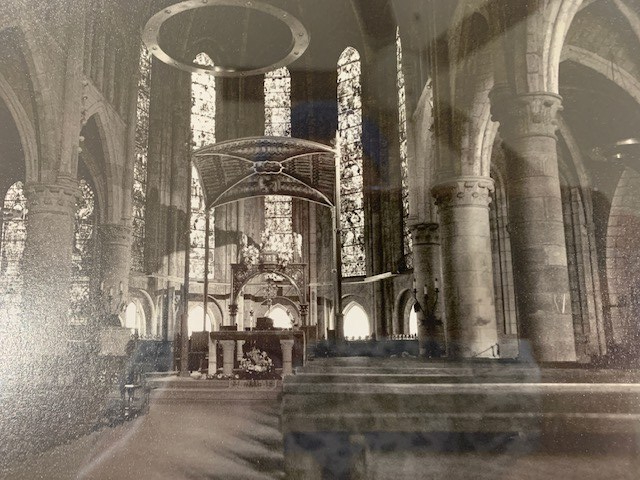 I
I
